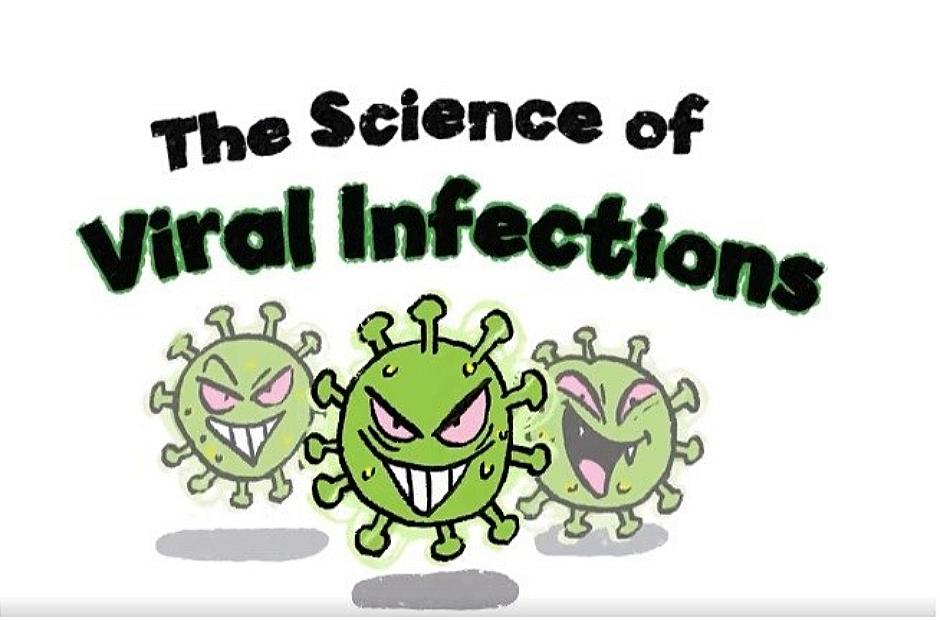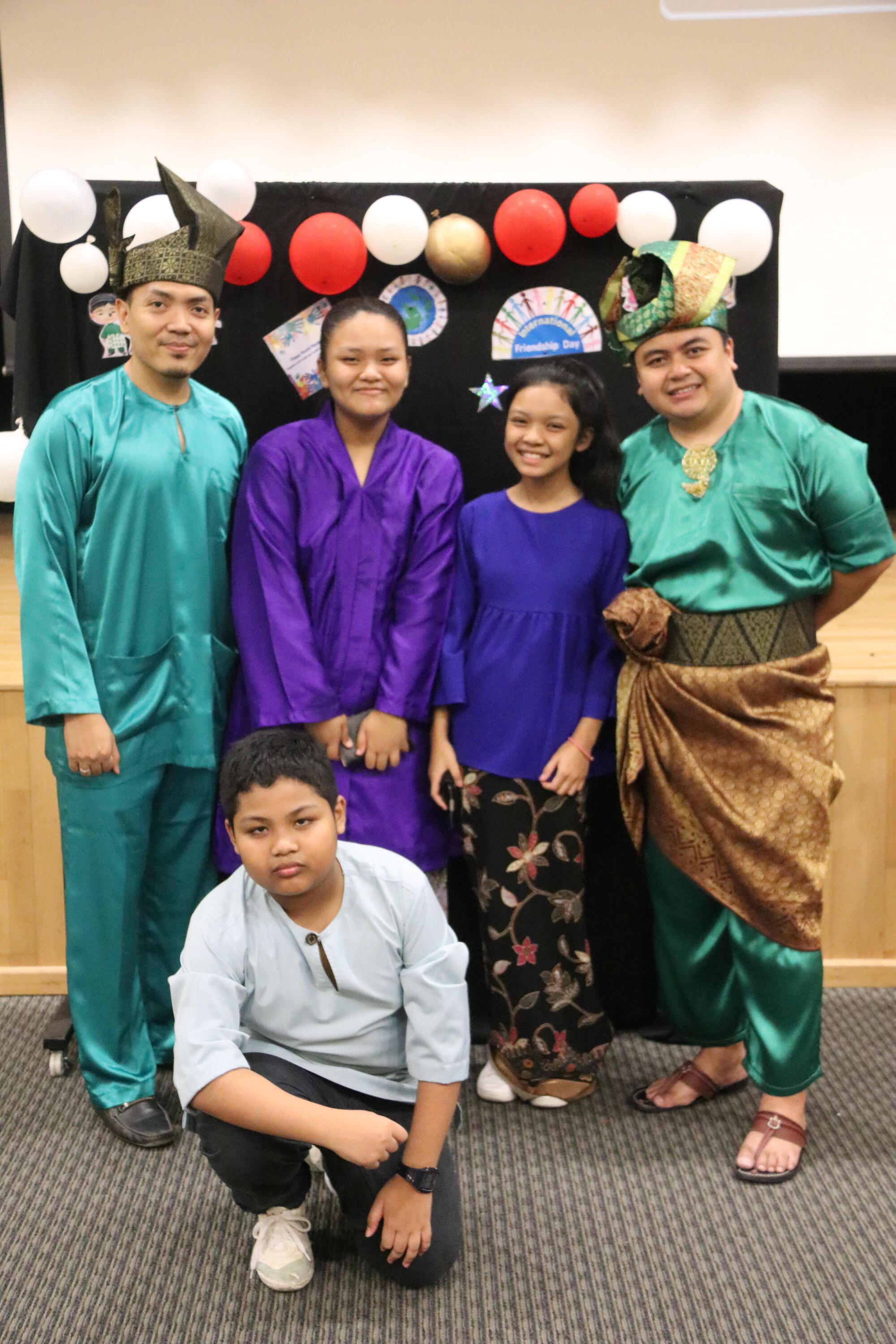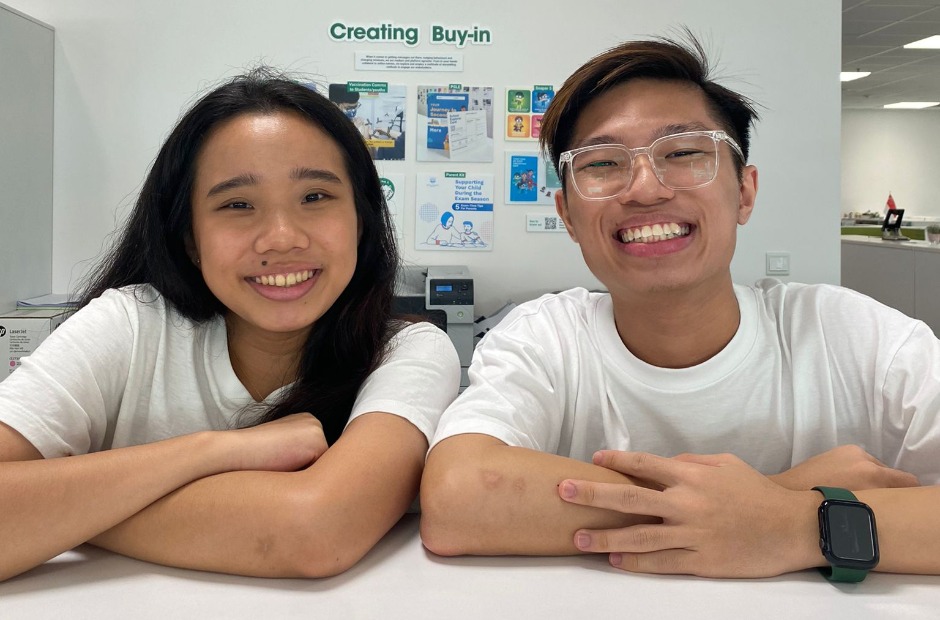“You have to know your enemy to fight it,” says Dr Chin Tan Ying and Ms Tay Wee Beng of Curriculum Planning and Development Division (CPDD)’s Science Unit. Their mission: Keep students informed about the virus so that they can be safe. And make it engaging as well. Tall order? Hear their story. By Tung Yon Heong
When SARS broke out in 2003, Ms Tay Wee Beng was majoring in life sciences and working on her undergraduate research in microbiology at the National University of Singapore.
Now a Senior Curriculum Specialist of Biology at MOE’s Curriculum Planning and Development Division (CPDD), Ms Tay recalls how her subject took on a new level of significance as the epidemic unfolded around her.
“What I learnt in class about the mechanisms of how viruses work and how our immune system responds to viral infections became immediately relevant and allowed me to understand the situation,” says Ms Tay.
“I remembered this when COVID-19 broke. Our students have no memory of SARS, so I wondered how we could help them make sense of the COVID-19 situation and cope with it,” she says.
Meanwhile, in the same period – 2003, Dr Chin Tan Ying, now Ms Tay’s colleague, was already designing resources to educate primary school students about SARS.
Currently an Assistant Director and Master Specialist (Science) at CPDD, Dr Chin was then a curriculum planning officer creating teaching materials for Science. Against the backdrop of SARS, her work took on new import as her team quickly came together to develop learning packages to educate students about the virus.

The team of the Science Unit at CPDD that created the COVID-19 learning package. Ms Tay Wee Beng, back row, 2nd from the left; Dr Chin Tan Ying, front row, 1st from the right.
The SARS outbreak was without precedent — MOE instituted temperature-taking in schools and instilled messages of social responsibility and personal hygiene, to counter the spread of the virus. The routines that were put in place 17 years ago would prove its usefulness again in subsequent virus outbreaks, such as H1N1 and today, COVID-19.
Science education in action
Looking back to the time of SARS, Dr Chin recalls, “The learning packages were simpler, consisting of resources such as pictures that introduced students to the different types of thermometers and temperature taking.”
The introduction of thermometers and the temperature-taking routine were a key part of schools’ efforts to keep students safe – students were taught to take their own temperature and those with high temperature were then isolated from the others.

A cartoon to educate students on the different thermometers.

Infographic on staying healthy during SARS
“Today our students are digital natives, and we have the capability to tap on a range of technologies, such as videos and animations to engage our students. These resources are uploaded on to the Student Learning System (SLS). Teachers shared that the SLS has allowed students to learn flexibly in school and at home, and it makes learning more dynamic as a result,” says Dr Chin.
Ms Tay adds that the animations used today help students visualise concepts, and it goes beyond making the packages more exciting.
“Some of the ideas about how the virus attacks the body and how the immune system responds to it can be complex for kids. So, we made use of animations and analogies to explain such concepts. One example is to liken the white blood cells to police in our bodies fighting the virus,” she says.
The key to developing effective learning packages, Dr Chin says, is for them to be simple and engaging for students at different levels.
“We are thankful to our in-house digital artists for making science come alive through the animation,” she says.
The team looked up reliable sites such as the MOH and WHO websites for the latest updates and advisories. They scan scientific news sites and journals related to COVID-19 to better understand how the virus infects and spreads, the symptoms of infection and the effects it has on our health. Dr Chin says the SLS also allows resources to be updated regularly when there is new information about COVID-19.
“With multiple sources of information, it is also important to support students in discerning fact from myths,” she says.
The importance of scientific literacy
While the mode of delivery of the information may have changed from SARS to COVID, what remains the same is the intent – to support students in developing scientific literacy.
“You have to know your enemy to fight it,” says Ms Tay. Against a nebulous and complex adversary such as a virus, one must be acquainted with its epidemiology.
“And once you know, students can apply what they have learnt in understanding local and global developments in COVID-19 and play an active role in taking care of themselves and their families” says Dr Chin.

An animation explaining how COVID-19 attacks the body and how the immune system responds to it..

A picture guide on maintaining personal hygiene.
She stresses that it is in these situations that students appreciate how science is not a mere academic subject but also very relevant in understanding the world around them. And through the students, the information reaches their families, raising health awareness as a nation.
Science meets values education
Another thing that is different during COVID-19, says Dr Chin, is how the different divisions and schools have come together to educate students during this crisis.
For instance, for Total Defence Day, students received learning packages that taught them how to behave during a crisis, keep safe from the virus and also taught them about the nature of virus. Science education met values education in this collaboration between Character and Citizenship Education Branch (CCEB) and Dr Chin’s team at CPDD. Thanks to this, messages reached students in different ways – through videos, posters, songs, class activities etc.
“It is also great to see some grounds-up initiatives by different schools. For example, we saw how the Vice Principal of National Junior College Mr Harman Johli worked with the staff to create hand-made sanitisers for each class, all from the existing materials in the school labs. This was another example of science in action!“ says Dr Chin.
 The staff at National Junior College making hand sanitisers for the school
The staff at National Junior College making hand sanitisers for the school
She also mentions how students at Fairfield Methodist Secondary took the initiative to design motivational posters to encourage their fellow classmates to practise personal hygiene routines. These posters were placed in class as well as shared on the school’s social media page.


Fairfield Secondary Students created posters to promote personal hygiene messages
Technology as a double-edged sword
However, Dr Chin points out that while the advancement of technology may have helped educators create a variety of learning resources and connect swiftly with fellow educators, it also presents certain new challenges — most notably, misinformation.
“When developing curriculum materials, we need to keep ourselves updated with scientific knowledge. We need to read as much as we can and figure out the information. But, [with the internet and social media], there are a lot of fake news and misinformation, which can cause unnecessary fear and distract the public from the important [and factual] messages,” says Ms Tay.
“You really need to sieve through all the information and find out what messages are useful and accurate so you can communicate that to your students,” she adds.
“This is also a teachable moment for the students. Through this experience, they will understand that scientific knowledge is always evolving and can change according to new information,” says Ms Tay.





.jpg)
